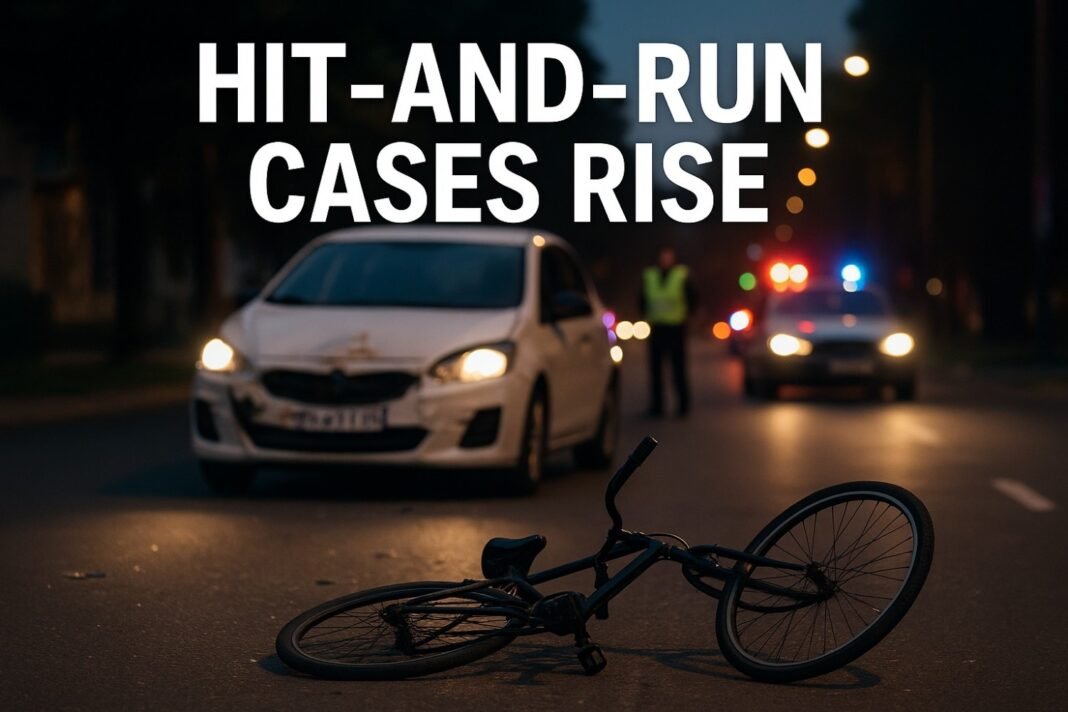A Grim Rise in Urban Road Fatalities
The National Capital Region (NCR), including Delhi, has seen a concerning surge in hit-and-run cases in the first half of 2025. Over 500 such incidents were reported in just four months, resulting in nearly 200 deaths. Despite a marginal drop compared to the previous year, the percentage of fatal road crashes caused by unidentified vehicles remains high—accounting for over 40% of all road deaths in Delhi. These figures paint a grim picture of public safety on urban roads.
What makes these cases particularly troubling is the lack of accountability. Many of these crashes occur in low-light conditions or poorly monitored areas, where neither vehicle details nor eyewitnesses are available. In more than half of pedestrian deaths, the offending vehicle could not be identified, making prosecution or compensation nearly impossible.
Why Drivers Choose to Flee
A complex set of psychological and systemic factors explains why many drivers flee the scene after causing an accident. Panic and fear of retaliation—whether legal or from bystanders—often push drivers to escape rather than assist victims. In some cases, mob violence or public outrage has made drivers wary of stopping, even when the law mandates aid.
Enforcement challenges further encourage this behavior. Many traffic intersections still lack high-resolution CCTV or Automated Number Plate Recognition (ANPR) systems. Where these exist, poor maintenance or delayed data retrieval often renders them ineffective. Police resources are also stretched thin, with only a limited number of personnel managing vast urban stretches and a growing vehicle population.
The situation is exacerbated by a deeply ingrained culture of impunity. In many cases, especially where SUVs or high-end vehicles are involved, social status and influence sway investigations. Victims’ families frequently report lackluster responses from authorities, and lengthy court processes discourage them from seeking justice.
Defensive Driving: What Individuals Can Do
While the system must reform, drivers and pedestrians can take steps to protect themselves. First, using dashboard cameras can provide crucial video evidence if an incident occurs. In many hit-and-run cases, video footage from private vehicles has helped police trace offenders when public surveillance failed.
Second, avoiding high-risk time slots—such as late evenings or weekends—and maintaining defensive driving practices can reduce the likelihood of accidents. Reckless two-wheeler driving, especially without helmets, accounts for a significant portion of traffic fatalities in Delhi.
Witness involvement is equally important. When an incident occurs, bystanders should prioritize noting vehicle details, offering aid, and contacting emergency services. The law protects Good Samaritans, ensuring they won’t face harassment for helping victims.
What Authorities Must Improve
The government and traffic authorities have a major role to play in curbing the rise of hit-and-run cases. Surveillance infrastructure needs urgent upgrades. Expanding coverage of ANPR-equipped CCTV cameras, especially at known accident-prone zones or “black spots,” is crucial for both deterrence and accountability.
Furthermore, boosting the number of trained traffic personnel and equipping them with digital tools for real-time monitoring can strengthen enforcement. The integration of digital platforms like iRAD (Integrated Road Accident Database) and e-DAR (Electronic Detailed Accident Report) must be accelerated to allow faster compensation and improved data sharing across departments.
Forensic investigation standards also require enhancement. Police must be trained to use physical evidence, such as paint transfer or vehicle fragments, rather than relying solely on witness testimony, which is often unreliable in panic-driven scenarios.
Speeding Up Support for Victims
A major shortcoming in the current system is the delay in compensating victims or their families. The Motor Vehicle Accident Fund was established to assist victims of hit-and-run cases, but its implementation has been inconsistent. In several cases, it has taken over two years for claims to be processed—by which time many families have already slipped into financial distress.
Authorities must streamline compensation claims by digitizing procedures, ensuring timely forensic reports, and establishing a centralized grievance redressal portal that victims or their families can easily access.
Making Delhi’s Roads Safer for All
The spike in hit-and-run cases in Delhi NCR is a symptom of deeper failures in urban planning, law enforcement, and driver accountability. While individuals must practice cautious and responsible driving, the burden lies with the state to ensure roads are monitored, investigations are thorough, and justice is served without bias. Only through a shared commitment—between citizens and the government—can we hope to make our streets safer and prevent further loss of life.








